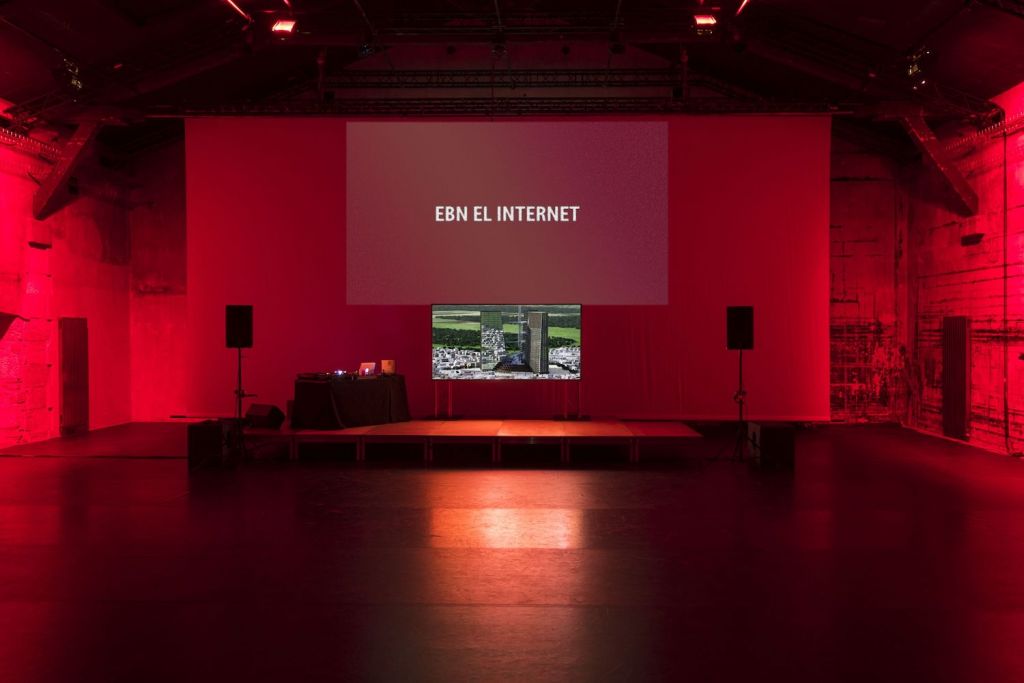Interview by Silvia Iacovcich

‘The only truth is music: it blends with the heartbeat universe, and we forget the brain beat’. Jack Kerouac’s quote from 1967’s Desolation Angels almost sounds like a threat to the very idea of historical research. It’s appropriate to claim historians have betrayed the past by focusing their attention solely on text, only recently checking up on alternative sources. Abstaining almost entirely from using their ears when investigating the past, history has long made silence a preferential and peaceful lead.
Invernomuto’s Black Med offers an exemplary demonstration of this axiom – a project by collaborative musicians and visual artist duo Simone Bertuzzi and Simone Trabucchi, whose Chapter IV will be performed at PAC, Padiglione d’Arte Contemporanea, Milan, on the 11th of September. Invernomuto met at the Academy of Fine Arts in Milan, where they both studied in the Art and New Media department.
The project itself has a substantial intellectual heritage. British sociologist Paul Gilroy’s 1993 essay The Black Atlantic: Modernity and Double Consciousness, anticipated the duo’s project fundamentals – and inspired Alessandra Di Maio’s 2012 book ‘The Mediterranean, or where Africa Does (Not) Meet Italy’, where the scholar examines the Mediterranean and its intersection between Africa and Europe as being one the world’s most crucial sites of international migration.
Gilroy’s redeeming call for a black Atlantic culture ‘whose themes and techniques transcended ethnicity, incorporating cultural traits from African, American, Caribbean, or British folklores as a result of these broadening crossroads’, is still left unremarked through unbroken chains of the Western conceptual and cultural dominance of the past several centuries.
That’s where Black Med – taking the perspective of Di Maio’s Mediterranean Sea as the vessel of that cultural package, representing a single geographical identity rather than race – highlights the strings that connect Europe to Africa and the Middle East through music culture. Sound becomes a vehicle for understanding the migration process and clearing up a distorted perception of identity perpetuated through a seemingly official idea of history.
Listening becomes a compass to authenticate a deeper connection between cross-cultures that have evolved and contaminated each other for centuries – and ever-sensed in countries so intrinsically soaked with many culturally defined natures as Italy.
Black Med’s listening sessions are divided into chapters focusing on different topics – Chapter IV, as the duo describes it, will ‘explore different ideas of futurism, undertaking unexpected trajectories between Europe and the Middle East, trying to deconstruct older tropes of the Orientalist canon critically’.
The live performances consist of a DJ set supported by slides that contextualize the musical pieces through informative texts presenting different journeys of sound movement associated with the Mediterranean. A new online platform will make the journey accessible to an open audience, with different sounds being uploaded by the user yet played and treated autonomously.
Music becomes an antidote to fight that historical amnesia connected with human ‘pathologies’ that have perpetuated a series of false binaries – oppressor vs oppressed above all. Invernomuto’s work brings collective responsibility for the historical tragedies of colonialism, slavery, and capitalist exploitation – underlining what’s wise not to forget – a reprimand that we need to know who we are if we have any hope of knowing where we are going.

You will be performing BLAClK MED Chapter IV at PAC in September: how was this chapter conceived, and what should we expect from the live performance?
This chapter was designed and developed during a residency at Alserkal Avenue in Dubai we did last year. It premiered at the Venice Biennale in November as part of the performance programme devised by Ralph Rugoff and Aaron Cezar. The format is the same as the previous chapters, but the content changes: this session expands the Mediterranean journey to include a detour into the Gulf. This session explores different ideas of futurism and undertakes unexpected trajectories between Europe and the Middle East, trying to deconstruct older tropes of the Orientalist canon critically.
One of the concepts behind Negus, present in many of your projects, revolves around the paradox of historical amnesia – how do you move into the process of unbuckling our forgotten collective memory?
The key for us is playing with history and memory without necessarily being chronological. You’re right by speaking about amnesia: Italian colonial history is a collective, controlled amnesia – and yet still induced by contemporary politics. The process – especially in Negus – involves testimonies and minor histories that people we met told us: discovering that the Coronation monument of Haile Selassie is a three-point star, exactly like the Mercedes Benz logo, was a revelation that opened so many tasks, both real and unreal, that can tell us more about amnesia than any other historical and official document.
Musical production is soaked into history, although it often makes history first – starting cultural revolutions and countercultures through sound and lyrics and almost presenting truths before they become visual. This also reminds me of BLACK MED Chapter 3 – and how Leif Elggren’s micro-recordings of the sound of a virus become exemplary to embody a threat as the virus itself. Are there more references around this telepathic and almost prophetic role of sound in BLACK MED and/or other projects?
Sure – we look for this often when compiling the listening sessions. Another important example (which also gave the title to our show last year at Galleria Nazionale in Rome) is “L’Egitto Prima Delle Sabbie” by Italian composer and singer Franco Battiato: the title quotes Georges Ivanovič Gurdjieff, who claimed to have found, in his expeditions, a map that was evidence of a civilization that had pre-dated dynastic Egypt, an advanced culture responsible for humanity’s subsequent wisdom. In those times, sand had not yet transformed northern Africa into what we now call the Sahara Desert, and the continent was the most thriving and civilized place on Earth.
“Persepolis” by Iannis Xenakis is also a great telepathic case: it was commissioned by the Persian Shah. It was part of a multimedia performance that premiered in the ruins of the Temple of Darius in the Iranian desert on August 26, 1971.
Last but not least, we also cite the peculiar case of Halim El-Dabh, born in Cairo in 1921. He first experimented with the technique of what would be later called musique concrète. Repurposing a wire recorder, a device mainly used for interviews, he taped a female chant at an Egyptian healing ceremony. On the other hand, he is the author of the orchestral/choral score for the Sound and Light show at the site of the Pyramids at Giza, which has been performed nightly since 1961.
Each chapter of BLACK MED follows a specific narrative link which connects its heterogeneous stories – what is the methodology in approaching each composition in establishing its uniformity and flow?
Well, it’s hard to verbalise it. First of all, each chapter takes disparate topics as starting points, for example, the alternate use of technology, migrations, and interspecies – to name a few directions. Basically, each chapter presents different journeys of sound movement across the protean area of the Mediterranean. In terms of flow, we look for a sort of cinematic feeling; there is a narration guided both by sound and contents – but it’s all designed as a show: lightning, the position of the audience, impact of the PA etc., all of these elements contribute to creating a space in which the listening session happens.
You mentioned the possibility of a change in the algorithm on the BLACK MED site that ‘will be able to play autonomously’. Did you come across with this in reaction to COVID-19?
We are designing a new web platform, and in a few months, we will publish it online together with an audio installation at the Parco Archelogico of Pompei. This will happen thanks to the Italian Council grant and the precious collaboration of Fondazione Morra Greco, Naples.
As you say, we are working on an algorithm that will be able to play autonomously. We are now creating the instructions for it; it won’t just be a music selector but can mix and fuse tracks together. Of course, the interface will also have a visual part composed of short texts and images, and it will be open: anyone can upload sounds and recordings into the system to feed the algorithm and create an ongoing Black Med magma. The idea was actually there way before the pandemic; COVID-19 just gave us more time to reflect and work on it.
Solitude or loneliness, how do you spend your time alone?
N/A






